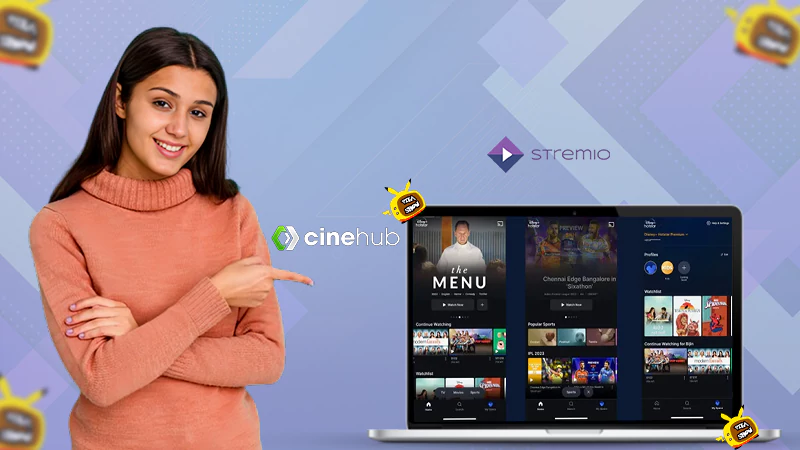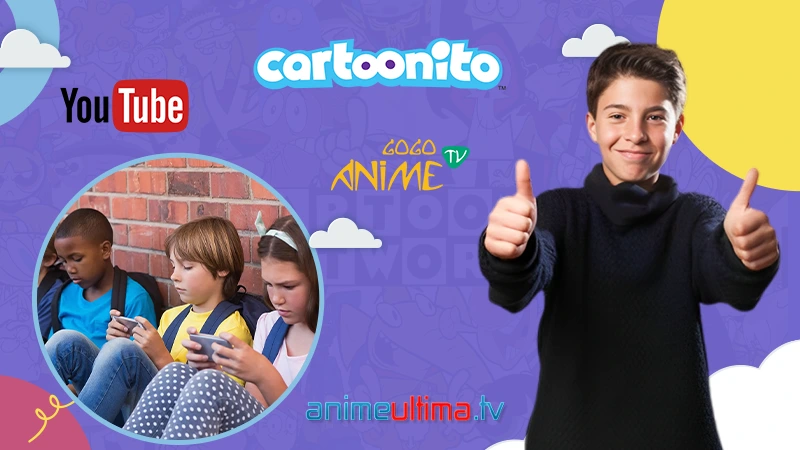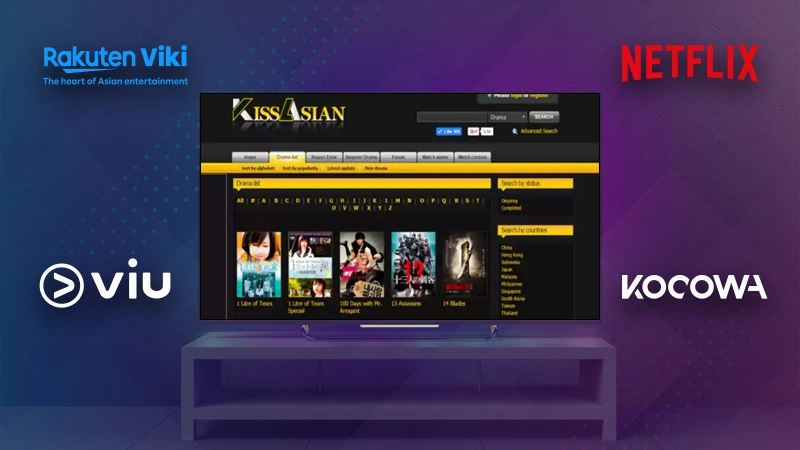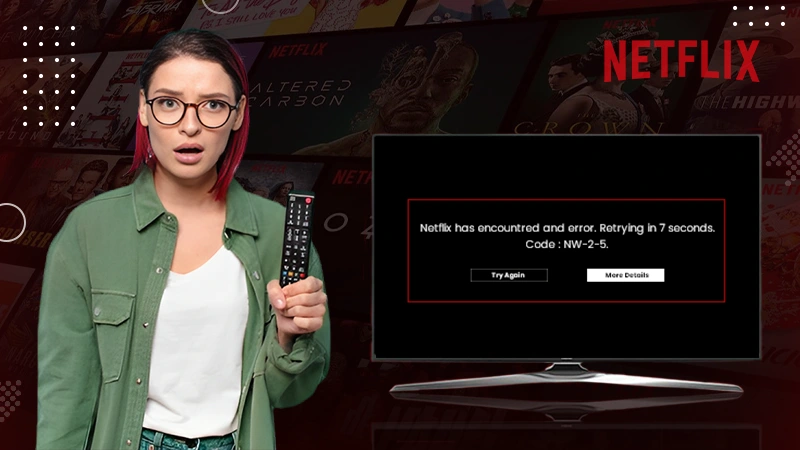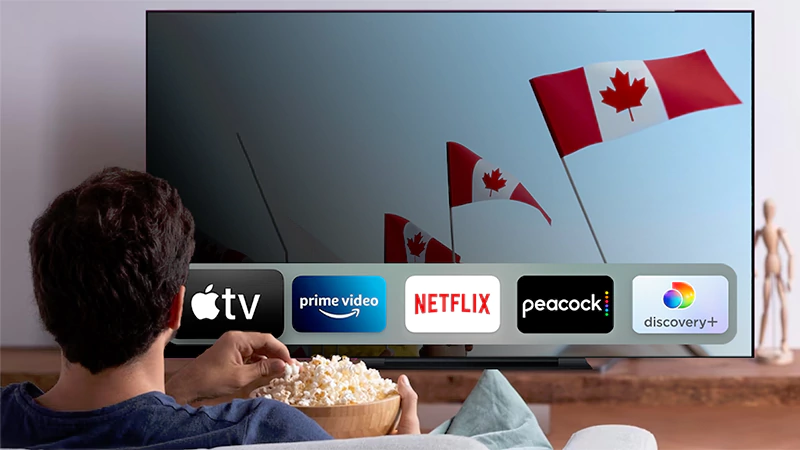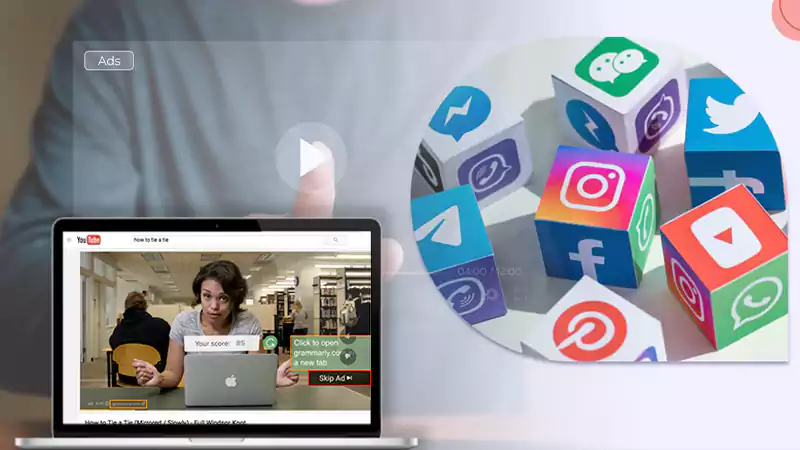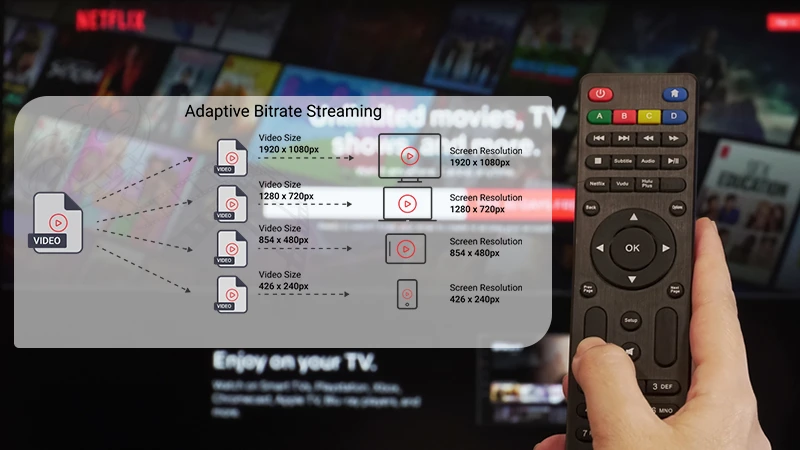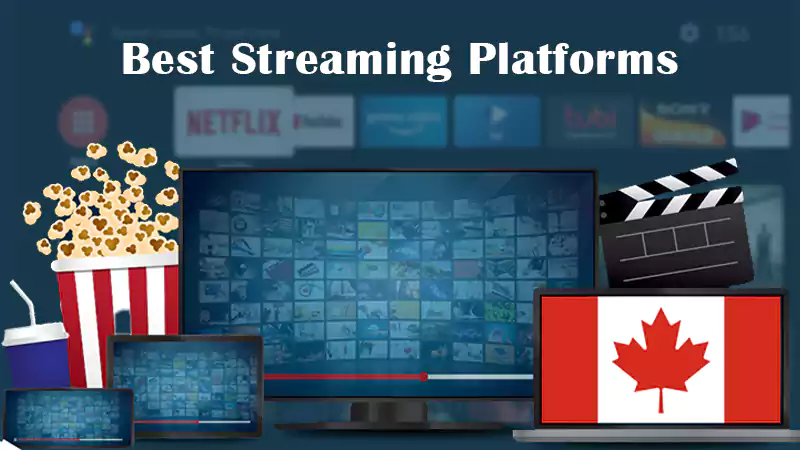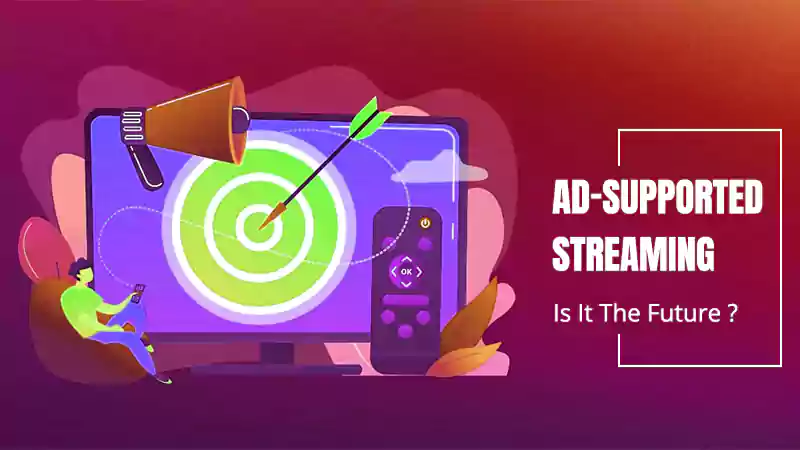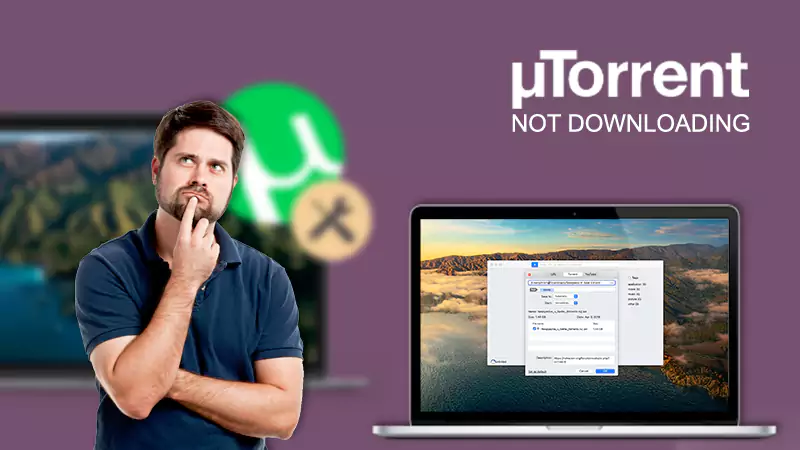Why is an Online Streaming Platform Better Than TV?
Key Takeaways
- OTT is a more convenient option for entertainment since unlike TV, you can access it through any device at any time and at any place.
- The revenue of online platforms is expected to show an annual growth rate of 7.73%.
- An OTT platform is also a cheaper option than a TV. The average monthly expense of owning an OTT subscription is around 5-10 USD.
Online streaming is getting more popular among viewers and companies. Many channels and shows moved to online spaces to be closer to consumers. And it is a continuous tendency since brands keep creating IPTV/OTT platforms for delivering content straight to viewers.
The major players in the market who are making this thing happen are Netflix, Amazon Prime, Hulu, HBO Max, Disney Plus, Apple TV+, and various others.
This graph shows how the major 4 companies (Netflix, YouTube, Prime Video, and Hulu) dominate almost 80% of the total market share of OTT viewing hours in the United States of America.
Compared to traditional television, streaming videos via the Internet brings more convenience and freedom to users. For this reason, companies opt for transmission through IPTV networks. Let’s explore the benefits in detail.
Why is an Online Streaming Platform Better Than TV?
It is pretty much clear that people prefer OTT platforms much more than watching TV since there are numerous benefits that you can leverage. From content delivery to convenience, efficiency, and compatibility, in every aspect, OTT is a much better option.
To elaborate on them all, here is the list that can convince you,
IPTV/OTT Allows Content Delivery Everywhere
Since the IPTV/OTT technology allows content delivery to any location, there are multiple ideas for unique selling propositions. One of them is transmitting TV programming from one country to another. It is what NimiTV and TVALB do. The companies provide Albanian communities with TV shqiptare and other content.
While TVALB serves viewers in the USA and Canada, NimiTV delivers Albanian TV channels to European countries and Australia.
Accessing a video streaming service requires that viewers have an Internet connection and a compatible device.
A business, in turn, can reach viewers globally, maximizing revenue.
IPTV/OTT Allows Viewers to Watch Content on Any Device

People need a device compatible with the Internet to watch the content you deliver. It can be a mobile phone, a tablet, a computer, or a TV. Multi-platform capabilities allow viewers to choose the device they have instead of buying a new one.
However, the accessibility of content on multiple devices depends on the provider’s decision. They can limit access to one device or, vice versa, let people watch videos on all of them.
“The revenue of online platforms is expected to show an annual growth rate (CAGR 2023-2027) of 7.73%, resulting in a projected market volume of US$397.20bn by 2027.” ~ Statista
For example, NimiTV includes the device choice in the subscription plan. One package allows watching videos on a computer, a mobile phone, and a Smart TV, while the other lets individuals view content only on a mobile phone.
Online Streaming Services Usually are Less Expensive Than TV
Compared to traditional television, online streaming services usually cost less. For example, while a cable TV company can require $50 and more from a viewer, an online streaming service costs $5-20. This allows people to purchase subscriptions to several platforms, having a wider content choice.
Businesses have Multiple Ways to Generate Revenue
The IPTV/OTT solution for video streaming provides companies and organizations with the ability to create their streaming platforms and monetize the content they deliver to viewers.
They can generate revenue with the help of monetization models:
- Subscriptions: Viewers purchase a monthly or yearly fee for access to content. There are also some options for a monthly subscription in case you want access to the platform for a short period.
- Advertising: Providers generate revenue by running ads during video playback. In this case, access to content is often free. A viewer, if someone feels like getting irritated by the ads, can purchase the premium version of the platform.
- Pay-per-view: Viewers pay for access to every single piece of content available on the platform. This is how OTT platform companies can make money.
- Hybrid: Providers combine several monetization models to diversify revenue streams.
Companies and organizations can also increase their income by expanding their coverage with the help of a CDN (content delivery network). Utilizing it can allow you to become a worldwide streaming service provider, as viewers will be able to watch videos without interruptions during playback.
Final Thoughts
There is a reason for people and businesses to move to online space. For viewers, it brings more flexibility and freedom to choose what, when, and where they watch. A business, in turn, can monetize content and reach viewers directly, bypassing third parties.
That said, the situation changes concerning time. People are nowadays enjoying more various OTT platforms and cutting off their attention from regular or traditional cable TV sets. Since streaming is so big of a trend nowadays, just 4 companies contribute 80% of total watch hours.
This gives us an idea of how big the market is getting day by day. According to some open-source data, the industry is growing at its fullest with a 7% annual rate. Easy accessibility, convenience, cheap subscription rates compared to cable TVs, and freedom to access the favorite content at any time, any place, and through any device, make it a far better option than a television.
Looking for Pikashow Alternatives? Check Out These 15…
Which Are the Best Websites to Watch Cartoons…
Everything You Need to Know About Kissasian and…
How to Fix Netflix Error Code NW-2-5: A…
Best Streaming Platforms to Binge-Watch Thrilling Shows in…
2023 Video Technology Trends: Device Reach is the…
Why Ads on Streaming Attract more users than…
What Bitrate Should I Stream At?
Best Streaming Platforms You Should Know in Canada…
What is Ad-Supported Streaming? Is It the Future?
11 Best Series to Binge This Fall
Why are Torrents not downloading? Is the Era…

